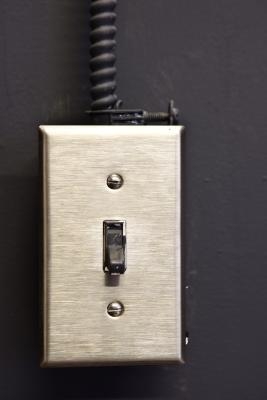
A fuel pump relay is like any other relay in terms of function. A relay uses a fairly low-power electrical signal to close a circuit that sends power to high-amperage devices like the starter, electric fans, A/C fan and fuel pump. Relays aren't technically necessary, but manufacturers use them to centralize the electrical control system in a small area and to reduce the amount of necessary heavy-duty wiring. Testing a relay is a simple procedure, requiring only a few minutes and the most basic of shop materials.
Pull the fuel pump relay out, flip it over and identify the terminals. You should see four terminals; two are ground terminals and two are positive. You'll notice that one of the terminals sits at a 90-degree angle to the others; this is the power-in (positive) terminal from the control device. The one opposite it is the control device ground, and the ones on either side are the circuit that goes to the fuel pump.
Cut two lengths of red and black wire, each about two feet long. Strip about two inches of insulation from either end of each wire. Rotate the relay so that the control-input terminal sits at the 12 o'clock position. Wrap the exposed copper of one of your red jumper wire tightly around this terminal, then wrap the terminal with electrical tape. Cover all of the exposed metal with tape, and make sure the wire's secure.
Wrap the exposed copper of your black jumper wire around the terminal opposite the control input and the terminal on the right. Put another way, connect one end of the black wire to the terminals at the 3 o'clock and 6 o'clock positions. Secure it with electrical tape and cover all of the exposed metal. At this point, only the terminal on the left (the 9 o'clock position) is exposed.
Tape the other end of your red jumper wire to the positive battery terminal. Carefully lower the other end of your black jumper onto the negative battery terminal and listen for a click as the wire makes contact. This click is the sound of the relay closing, and it's a good sign. Lift the black wire off of the battery terminal.
Connect your test light's alligator clip to the exposed terminal on the relay and press the test light's tip into the top of the negative battery terminal. If the light comes on when you touch it to the battery, then the terminal is stuck shut and it's no good. The light should only come on when you touch the black wire to the negative battery terminal. If the light doesn't come on when you touch the wire to the terminal then the relay is no good.